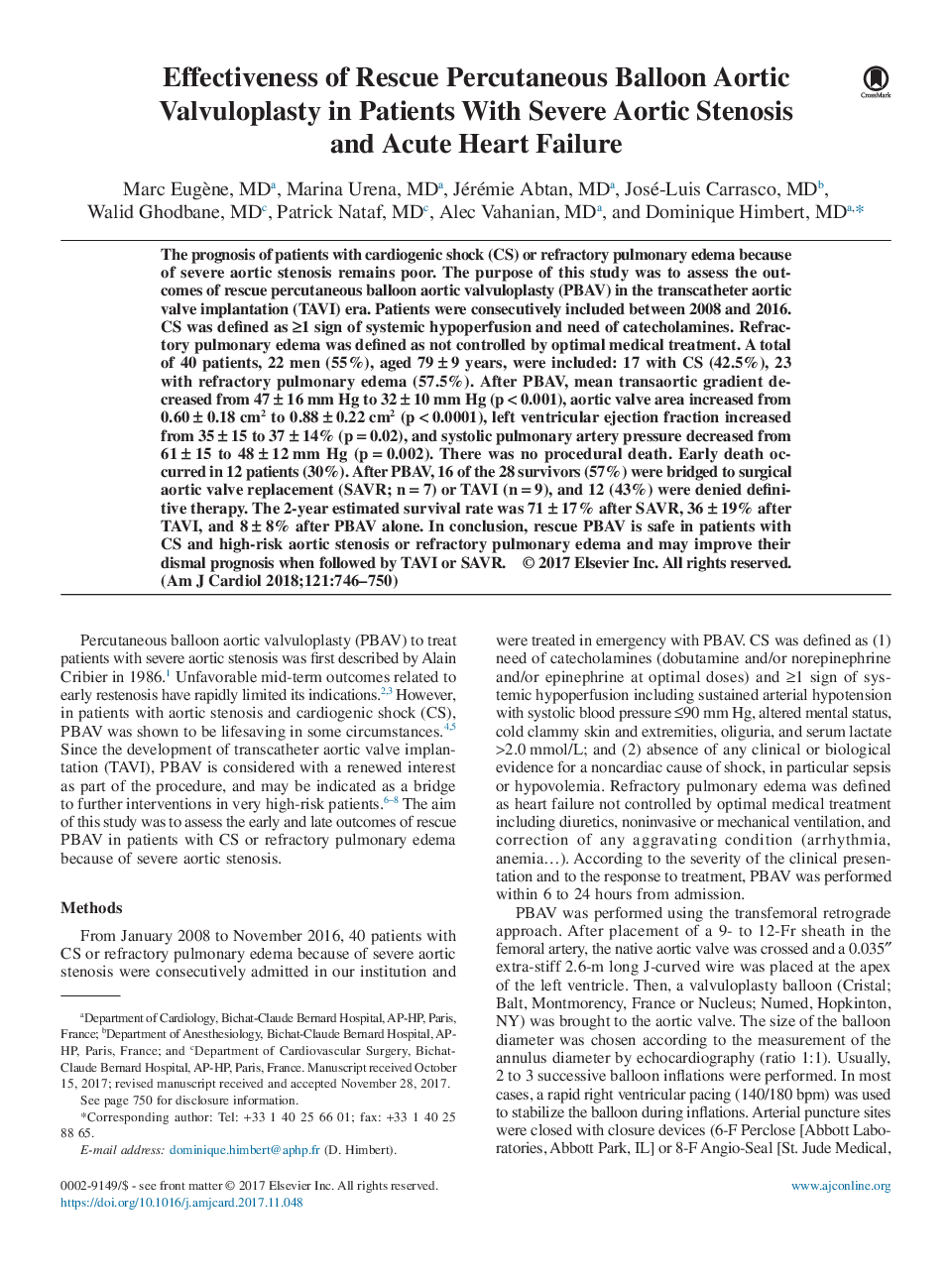| Article ID | Journal | Published Year | Pages | File Type |
|---|---|---|---|---|
| 8651474 | The American Journal of Cardiology | 2018 | 5 Pages |
Abstract
The prognosis of patients with cardiogenic shock (CS) or refractory pulmonary edema because of severe aortic stenosis remains poor. The purpose of this study was to assess the outcomes of rescue percutaneous balloon aortic valvuloplasty (PBAV) in the transcatheter aortic valve implantation (TAVI) era. Patients were consecutively included between 2008 and 2016. CS was defined as â¥1 sign of systemic hypoperfusion and need of catecholamines. Refractory pulmonary edema was defined as not controlled by optimal medical treatment. A total of 40 patients, 22 men (55%), aged 79â±â9 years, were included: 17 with CS (42.5%), 23 with refractory pulmonary edema (57.5%). After PBAV, mean transaortic gradient decreased from 47â±â16âmm Hg to 32â±â10âmm Hg (pâ<â0.001), aortic valve area increased from 0.60â±â0.18âcm2 to 0.88â±â0.22âcm2 (pâ<â0.0001), left ventricular ejection fraction increased from 35â±â15 to 37â±â14% (pâ=â0.02), and systolic pulmonary artery pressure decreased from 61â±â15 to 48â±â12âmm Hg (pâ=â0.002). There was no procedural death. Early death occurred in 12 patients (30%). After PBAV, 16 of the 28 survivors (57%) were bridged to surgical aortic valve replacement (SAVR; nâ=â7) or TAVI (nâ=â9), and 12 (43%) were denied definitive therapy. The 2-year estimated survival rate was 71â±â17% after SAVR, 36â±â19% after TAVI, and 8â±â8% after PBAV alone. In conclusion, rescue PBAV is safe in patients with CS and high-risk aortic stenosis or refractory pulmonary edema and may improve their dismal prognosis when followed by TAVI or SAVR.
Related Topics
Health Sciences
Medicine and Dentistry
Cardiology and Cardiovascular Medicine
Authors
Marc MD, Marina MD, Jérémie MD, José-Luis MD, Walid MD, Patrick MD, Alec MD, Dominique MD,
